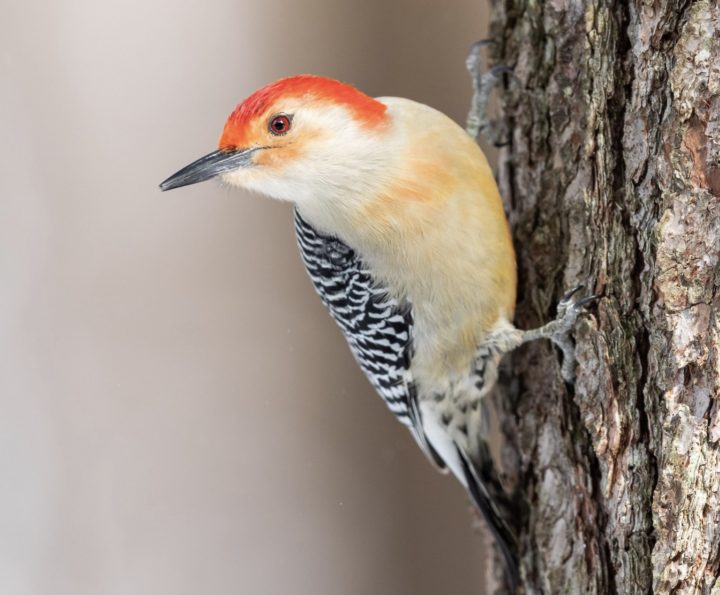2021 Final Results
Birds Bring Us Together
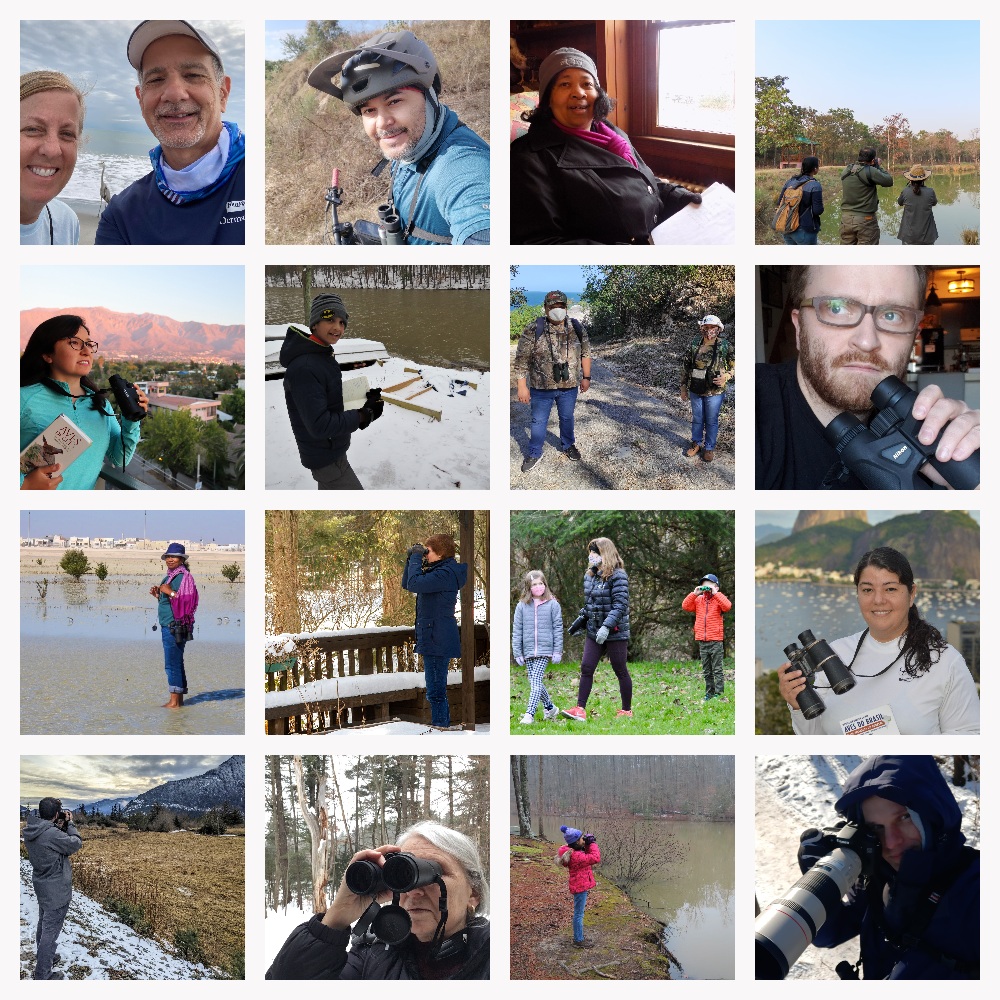
In an unprecedented year, the Great Backyard Bird Counts reminds us that thousands of people around the world are united in their enjoyment of watching birds. Turnout this year was incredible, albeit with many people understandably staying closer to home. Perhaps this gave us an even deeper appreciation for the beauty of the natural world in and around our homes and communities? Our deepest gratitude to each and every bird enthusiast around the world who shared Merlin Bird ID(s), eBird checklist(s), or photos, sounds, or videos from February 12th–15th, 2021. We broke records once again and we could not have done it without you!
In a snapshot:
- 6,436 species of birds identified
- 190 participating countries
- 379,726 eBird checklists
- 479,842 Merlin Bird IDs
- 151,393 photos added to Macaulay Library
- 300,000+ estimated global participants
Numbers may change slightly as final checklists are added and validated by our reviewers. Data reflect totals through March 12th, 2021.
Click on the interactive graphs to study the results more closely.
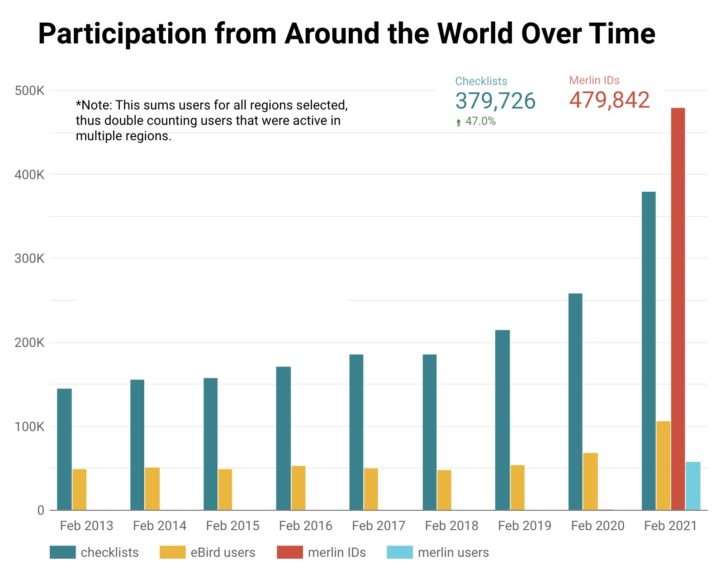
Participation Is Growing
In 2013, the Great Backyard Bird Count started saving data in eBird. We compiled participation from 2013 to 2021 to see how the project participation has changed over time. Each year more and more people join in the fun of sharing their bird sightings. We are continuously humbled by the numbers. Anyone who is passionate about preserving biodiversity can be heartened to see how the world is coming together to admire, watch, and count birds. Be inspired and proud of our accomplishments.
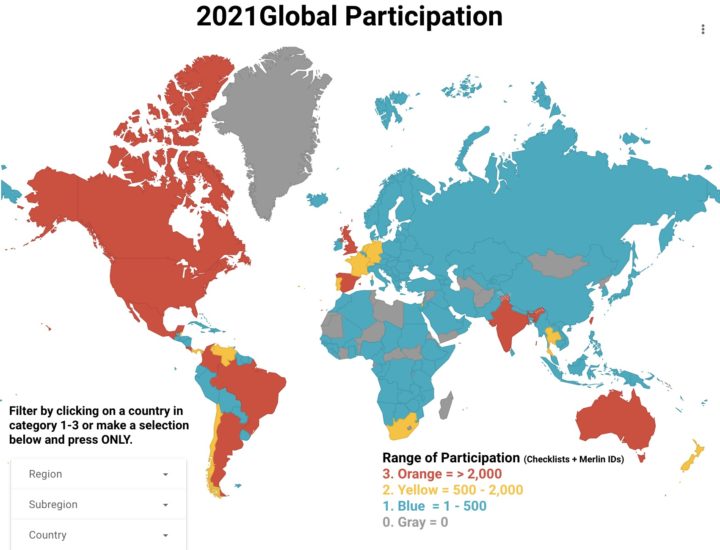
Respect for Birds Is Global
The map clearly shows that the world is actively engaged in watching and reporting birds. We had 190 countries submit at least one checklist in 2021. Record-breaking participation from the United States, Canada, and India was followed by impressive numbers in Spain, the United Kingdom, and Australia. In Latin America, Argentina had the most checklists, followed closely by Mexico, with Colombia holding the 10th spot. A growing country for participation is Taiwan, which came in 9th place with 2,050 checklists.
Top Three Countries Deliver
The United States had the highest number of checklists with 250,000+ and participation from all 50 states, the District of Columbia, and all five territories. California had the most checklists with 20,715.
Canada had the second highest number of checklists with 43,465 and one or more checklists in all 10 provinces and 3 territories. The province of Ontario delivered an impressive 21,638 checklists while the province of British Columbia had the most species reported with 202.
Once again, India was one of the top countries to participate with 33,438 checklists with one or more checklists from all 35 states or territories. The state of Uttarakhand had the most species reported at 425, while the state of Tamil Nadu had the most checklists at an impressive 12,937.
Bird Diversity and Photos Submissions
Colombia delivered again as the country with the most species reported—1,167 species of their 1,826 total known species. India was second with 960 reported species, which is more than 70% of the 1,349 species known to live in India.
In general, Latin America delivered huge numbers of bird species with Ecuador, Brazil, Mexico, Argentina, and Costa Rica all reporting 600+ species over the count weekend. The United States, Australia, and Thailand reported 500+ species. An incredible global tally for species around the world.
Photo submissions skyrocketed this year from previous years! This is due to merging the submissions process with the Macaulay Library archive. Gorgeous images from around the world were submitted over the count weekend, totaling more than 150,000 submissions in four days.
Rare Winter Sightings
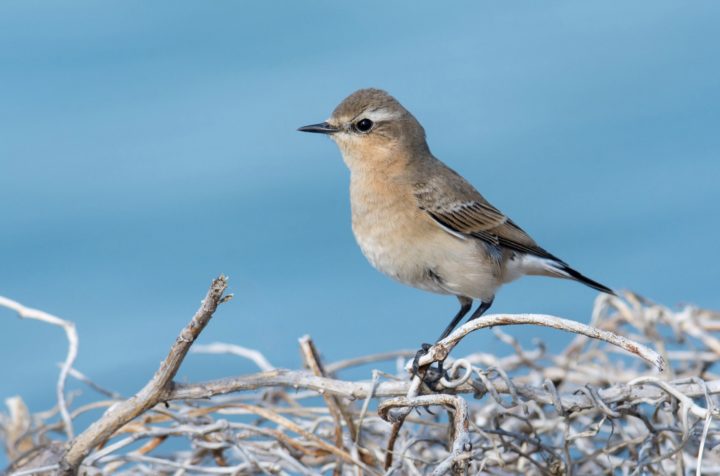
The United States and Canada had a few unique bird sightings from species that usually reside farther south including Black-faced Grassquit, Crimson-collared Grosbeak, Golden-crowned Warbler, Streak-backed Oriole, Rufous-backed Robin, Cuban Pewee, and Northern Jacana. We also had birds more commonly seen across the Atlantic such as Brambling, White Wagtail, and Bar-tailed Godwit.
Particularly noteworthy was the Northern Wheatear found overwintering in Ohio! While this bird can be seen in parts of Alaska and Northern Canada during the breeding season, they generally migrate to central Africa during nonbreeding months. This species has been seen in southern states such as Texas and Florida in nonbreeding months, but Ohio sets a new nonbreeding latitudinal record.
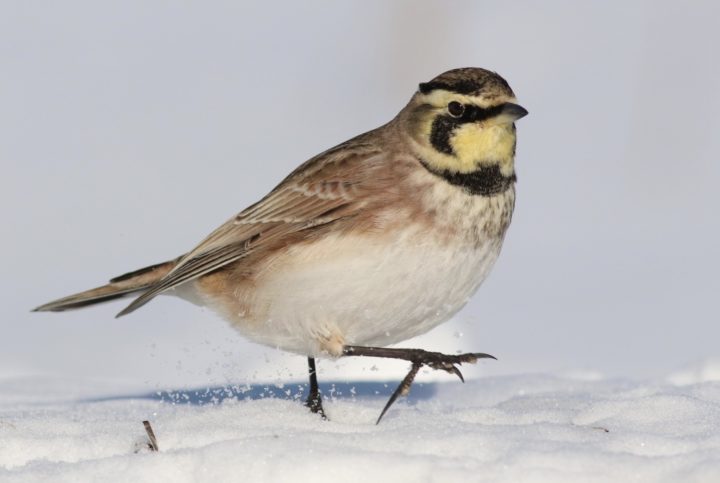
Trends & Highlights
As predicted by BirdCast, Red-winged Blackbirds showed up in large numbers earlier and farther north than usual in February. A huge flock of 200,000 Red-winged Blackbirds was the second-biggest group reported in the United States this year, just behind a gathering of 250,000 Common Murres in California. Some migrants commonly start migrating in late February and March, but some species were almost a month ahead of schedule in places such as Maine and Nova Scotia.
Horned Larks were seen in large numbers with one big showing of 32,500 reported at one location in Utah. It is heartening to see large numbers of species being reported. As is usual, birds continue to surprise and delight us with their global adventures!
We invite you to explore our graphs and data to see more of the incredible contributions that you made as global citizens committed to understanding and preserving bird populations.
Stay connected to the Great Backyard Bird Count.
By subscribing to stay connected to the Great Backyard Bird Count, you agree to receive communications from The Cornell Lab, Audubon, and Birds Canada. You may unsubscribe from any of the organizations' communications at any time.

